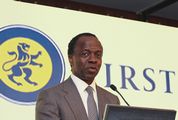SECURING a comfortable retirement with a decent income stream is a distant dream for most pensioners, but a silver lining is that self-imposed initiatives by the industry to reduce costs are bearing fruit. If this leads to more pensioners starting to save, costs could drop by half and the current hole in savings — which is effectively in a crisis — could begin to get filled.
Umbrella funds, which pool the retirement investments of multiple employers, are becoming popular and the latest industry databook from Sanlam reveals some significant cost declines over the past year. What is significant about this is that it has happened even before a new paper on retirement industry costs has been released.
The paper is expected in the next few months, with full reforms by 2015, and the Treasury maintains that while progress has been made, costs still remain a challenge, especially for savings products. The financial services industry, in turn, has cautioned that new regulatory burdens could eat up 10% of their cost base and would need to be passed on to consumers.
But there are segments of the industry that have taken heed of government’s concerns and are showing that there is no need for prescribing how they go about bringing their costs down as it can be the natural result of competition and moral suasion.
The Sanlam study into umbrella funds showed, for example, that total costs of group life assurance benefits in umbrella funds (relative to salaries) was now below 1.8%, from 2.24% in 2011 and 2.51% in 2010, while the cost of death benefits had dropped to 1.54% from 2.14% in 2011. The survey found the average cost of administration is 0.9%, down from 1.1% last year.
However, it was not all good news. The benchmarks survey found that 51% of surveyed pensioners were not making ends meet and 62% of job changers still not preserving their retirement savings, despite all the warning signs.
"Most employees seem predisposed to apathy with regard to retirement planning, with only 10% of employees going back to review the retirement benefit option they selected when they joined the fund. They consider retirement as a very distant event and are not interested in the detail around it. In fact, our research shows that people only seek financial advice on average 12 years before retirement," said the new CEO of Sanlam Employee Benefits, Dawie de Villiers.
The survey showed that 33% of pensioners are still in debt after they stop working, yet according to Sanlam, after working for 10 years, workers need to have saved twice their annual salaries.
A shocking statistic in the past week revealed that savers born in 1972 have a pensions index value today of just 30 points, from 75 in 2002. The Alexander Forbes pensions index is used to determine if savers can meet their requirement of replacing 75% of their salaries at retirement. In 2002, the savers were on track to meet the 75% target, hence the index started at the 75 mark. Replacement levels for younger workers are now at just 30%, while older retirees born in 1952 are at the 52 index level.
The MD for research and product development at Alexander Forbes, John Anderson, cautions about "significantly lower projected retirement benefits than what was expected at the start of 2002". And this despite pretty decent returns from the market.
Most workers in South Africa who change jobs are still cashing out, leaving significant holes to fill later on, but Mr Anderson says lower bond yields are a major factor behind the lower index values. This is because lower bond yields can signal lower investment returns, which reduces the amount of capital each of the three members is expected to have when they retire.
Another problem is that the cost of converting the accumulated fund value at retirement, for a 65-year-old male, into an income stream has increased over time.
According to Sanlam Employee Benefits’ David Gluckman, the best way to drive down charges is to harness competition. "The silver bullet here is increasing preservation," says Mr Gluckman. The survey found members should have double the amount of money they have in funds than they do now.
Mr Gluckman said costs would swing lower as preservation improved in line with the coming changes, possibly halving costs.
The Treasury paper is going to be critical for the industry, but Mr Gluckman is concerned that an "industry method" is needed to standardise charges. His boss, Sanlam group CE Johan van Zyl, clearly agrees and cautioned recently against regulation and prescription as the only mechanisms to reduce costs and improve savings.
Notably, the retirement survey received a detailed spread of charges across 41 employers — which is up from the fewer than 10 employers in 2010 who could complete the questions. It took place across 21 members with R4bn in assets in umbrella funds.























Register/Login
Close XMy News
You can only set up or view personalised news headlines when you are logged in as a registered user. Thereafter you can choose the sectors of industry in which you are interested, and the latest articles from those sectors will display in this area of your console.
Login or Register.Top Stories
My Watchlist
You can only set up or view your share watchlist when you are logged in as a registered user. Thereafter you can select a list of companies and enter your share details to monitor their performance.
Login or Register.My Clippings
You can only clip articles when you are logged in as a registered user. Thereafter you can click on the "Read later" icon at the top of an article to save it to this area of your console, where you can return to read it at any time.
Login or Register.Change: -1.21%
Change: -1.31%
Change: -1.11%
Change: -1.12%
Change: -2.16%
Data supplied by Profile Data
Change: 0.00%
Change: 0.00%
Change: -1.21%
Change: 0.00%
Change: 0.00%
Data supplied by Profile Data
Change: -0.09%
Change: -0.09%
Change: -0.05%
Change: -0.09%
Change: -0.38%
Data supplied by Profile Data
Change: 0.00%
Change: 0.00%
Change: 0.00%
Change: 0.00%
Change: 0.00%
Data supplied by Profile Data